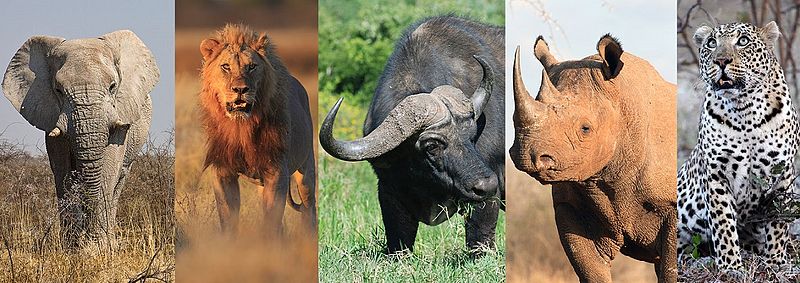The Masai Mara National Reserve is one of Africa’s most iconic and visited wildlife reserves, offering breathtaking landscapes, rich wildlife, and cultural encounters. Known globally for the Great Wildebeest Migration, it attracts nature lovers, photographers, and adventurers from around the world, particularly from the USA, Australia, and the UK. At Joe Photography and Safari, we specialize in creating unforgettable safaris, fully documented with professional photography to preserve your memories.
Table of Contents
Location and Accessibility
Situated in southwestern Kenya, the Masai Mara covers approximately 1,510 square kilometers of open plains, woodlands, and riverine forests. It is part of the greater Mara-Serengeti ecosystem, bordering Tanzania’s Serengeti National Park. Access to the reserve is easy by road or air, with regular flights from Nairobi’s Wilson Airport to airstrips within the Mara.
Wildlife in Masai Mara National Reserve
The Masai Mara is home to an impressive diversity of wildlife. Visitors are almost guaranteed sightings of the Big Five:
- Lions – The reserve is famous for its large lion prides.
- Elephants – Majestic herds roam freely across the plains.
- Buffalos – Often seen grazing in groups along the riverbanks.
- Leopards – Elusive but frequently spotted around rocky outcrops.
- Rhinoceroses – While rare, black rhinos can be found in some areas.

Beyond the Big Five, the Mara boasts cheetahs, hyenas, giraffes, zebras, wildebeests, and a vast array of antelope species. The reserve is also a paradise for bird enthusiasts with over 500 bird species recorded, including vultures, eagles, and storks.
Masai Mara National Reserve Lodges & Camps
The Masai Mara National Reserve offers a wide variety of accommodations ranging from luxury lodges to budget-friendly camps, catering to all kinds of travelers. Whether you’re looking for an opulent safari experience or a rustic adventure under the stars, the Mara provides unforgettable stays.
Luxury Lodges in Masai Mara
Angama Mara
- Location: Overlooking the Mara Triangle.
- Features: Inspired by “Out of Africa,” this lodge offers panoramic views, private butlers, infinity pools, and fine dining.
- Perfect For: Honeymooners and luxury seekers.
Mara Serena Safari Lodge
- Location: On a hill with views over the Mara River.
- Features: Contemporary rooms, a pool, and daily game drives. Known for its prime location for observing the Great Migration.
&Beyond Kichwa Tembo Tented Camp
- Location: Near the Oloololo Escarpment.
- Features: Luxury tents, personalized safaris, and cultural Maasai experiences.
Mid-Range Lodges and Camps
Ashnil Mara Camp
- Location: Close to the Mara River.
- Features: 50 luxury tents with en-suite bathrooms, an outdoor pool, and game drives tailored to guests’ preferences.
- Ideal For: Families and groups.
Keekorok Lodge
- Location: Near the southern entrance of the reserve.
- Features: Kenya’s first lodge in the Mara, offering direct views of the migration path. Known for its hippo pool and walking safaris.
Basecamp Explorer Masai Mara
- Location: Along the Talek River.
- Features: Eco-friendly camp with solar power and close ties to the local Maasai community. Ideal for eco-conscious travelers.
Budget-Friendly Camps
Miti Mingi Eco Camp
- Location: Near the Sekenani Gate.
- Features: Basic tents, shared bathrooms, and budget game drives.
- Best For: Backpackers and budget travelers.
Enchoro Wildlife Camp
- Location: Outside the reserve near the Oloolaimutia Gate.
- Features: Affordable tents with private or shared bathrooms, offering a comfortable yet budget-friendly stay.
Adventure and Mobile Camps
Rekero Camp
- Location: Near the Mara River.
- Features: Mobile tents set up in prime wildlife viewing spots, offering a blend of adventure and comfort.
- Popular For: Migration safaris and close wildlife encounters.
Alex Walker’s Serian
- Location: Private conservancies outside the Mara.
- Features: Focus on walking safaris, fly camping, and exclusivity with just a few tents per camp.
- Ideal For: Adventurous travelers looking for an intimate experience.
Why Stay in Masai Mara Lodges and Camps?
- Proximity to Wildlife: Many lodges and camps are strategically located near migration paths or rivers for optimal game viewing.
- Cultural Immersion: Some accommodations offer cultural experiences with the local Maasai community, including traditional dances and village visits.
- Eco-Friendly Options: Many camps practice sustainable tourism, supporting local communities and wildlife conservation.
Best Time to Visit Masai Mara National Reserve
| Season | Months | Weather | Key Highlights | Ideal For |
| Dry Season | July to October | Warm days, cool nights, minimal rain | Great Migration – Millions of wildebeests and zebras cross the Mara River. Clear skies for photography. | Game viewing, photographers, witnessing the migration, first-time safari-goers. |
| Short Rains | November to December | Short, sporadic rain showers | Lush landscapes, fewer tourists. Wildlife is still visible. | Budget travelers, bird watchers, and those seeking a quieter experience. |
| Green Season | January to February | Warm and dry with occasional showers | Calving season – newborn animals and active predators. Scenic, green landscapes. | Wildlife photographers, predator action enthusiasts, and bird watchers. |
| Long Rains | March to May | Heavy rains, wet, and humid | Fewer tourists, discounted accommodation rates, green landscapes, but some roads may be impassable. | Budget travelers, bird watchers, and solitude seekers. |
| Transition Period | June | Mild and dry weather | Wildlife gathers around permanent water sources, with fewer tourists. | Game viewing without large crowds and budget-conscious travelers. |
Key Tips:
- July to October is the most popular period due to the Great Migration, but expect higher prices and crowds.
- March to May offers budget-friendly rates but be prepared for muddy roads and potential delays.
- Contact Joe Photography and Safaris at +254717563531 for guided safaris with professional photography throughout the year.
Top Things to Do in Masai Mara National Reserve
The Masai Mara National Reserve is a world-renowned wildlife destination, offering visitors a wide range of activities that go beyond the traditional safari experience. Whether you’re a wildlife enthusiast, an adventure seeker, or a cultural explorer, Masai Mara promises an unforgettable journey. Here’s a guide to the top things to do in this iconic reserve:
1. Game Drives
Game drives are the most popular activity in Masai Mara, offering close encounters with Africa’s famous wildlife.
- Best Time: Early morning and late afternoon when animals are most active.
- Big Five Sightings: Lions, elephants, leopards, buffaloes, and rhinoceroses are commonly seen, alongside wildebeests, zebras, and giraffes.
- Photography Opportunities: Capture stunning photos of animals in their natural habitat, especially during golden hour.
2. Witness the Great Migration
One of the world’s most spectacular natural events, the Great Wildebeest Migration, occurs from July to October.
- Mara River Crossings: Watch wildebeests and zebras risk their lives crossing the crocodile-infested Mara River.
- Dramatic Predator-Prey Interactions: Lions, cheetahs, and hyenas closely follow the herds, providing thrilling wildlife encounters.
3. Hot Air Balloon Safaris
Experience the reserve from above with a hot air balloon safari.
- Bird’s-Eye View: Enjoy breathtaking panoramic views of the vast plains, rivers, and wildlife.
- Champagne Breakfast: Many tours end with a luxury breakfast in the bush, adding a touch of elegance to your adventure.
4. Cultural Visits to Maasai Villages
Immerse yourself in the rich culture of the Maasai people.
- Maasai Traditions: Learn about their customs, traditional dances, and warrior lifestyle.
- Handmade Crafts: Purchase authentic beadwork and souvenirs directly from local artisans.
5. Walking Safaris
For a more intimate experience with nature, opt for a walking safari.
- Guided by Maasai Warriors: Gain insights into the flora, fauna, and tracking techniques used by the Maasai.
- Close Encounters: Walk among the wildlife and appreciate the smaller details often missed on game drives.
6. Bird Watching
Masai Mara is a paradise for bird lovers, with over 500 bird species recorded.
- Notable Birds: Spot vultures, ostriches, eagles, herons, and the colorful lilac-breasted roller.
- Best Time: Bird watching is excellent year-round, but the wet season (November to April) brings migratory species.
7. Bush Dinners and Sundowners
Enhance your safari experience with bush dining under the African sky.
- Sundowner Cocktails: Enjoy drinks while watching the sunset over the horizon.
- Authentic Cuisine: Savor traditional Kenyan dishes prepared in the wilderness, surrounded by the sounds of nature.
8. Photography Safaris
Masai Mara is a haven for photographers, offering countless opportunities to capture breathtaking wildlife moments.
- Professional Guidance: Some tours include photography workshops led by experts.
- Golden Hour Shots: Early morning and evening light provide the perfect conditions for stunning images.
9. Night Game Drives
For a unique perspective, try a night game drive.
- Nocturnal Wildlife: Spot animals like hyenas, leopards, and bush babies that are active after dark.
- Specialized Equipment: Night drives use infrared lights for minimal disturbance to wildlife.
10. Visit the Mara River
The Mara River is central to the reserve’s ecosystem.
- Iconic River Crossings: Witness the dramatic scenes of the Great Migration.
- Crocodile and Hippo Sightings: The river is home to large populations of crocodiles and hippos.
11. Camping in the Wild
For adventurous travelers, camping in Masai Mara offers a raw and authentic experience.
- Tented Camps: Ranging from luxury to budget, these camps immerse you in nature.
- Under the Stars: Fall asleep to the sounds of wildlife and wake up to breathtaking sunrise views.
12. Visit the Oloololo Escarpment
The Oloololo Escarpment offers stunning views over the Masai Mara plains.
- Scenic Hikes: Enjoy guided hikes with panoramic vistas and the chance to spot wildlife from above.
- Historical Significance: The escarpment is featured in many films, including Out of Africa.
Plan Your Masai Mara Adventure with Joe Photography and Safari
At Joe Photography and Safari, we take pride in creating personalized Masai Mara experiences for our clients from the USA, Australia, and the UK. Our safaris combine thrilling activities with professional photography, ensuring your memories last a lifetime. Contact us at +254717563531 to book your unforgettable Masai Mara adventure today.
FAQs on Masai Mara National Reserve
What is the best time to visit Masai Mara National Reserve?
The best time to visit is from July to October during the Great Migration, when millions of wildebeests and zebras cross the Mara River. However, January to February is also ideal for wildlife viewing due to the calving season, offering opportunities to witness predator action.
How do I get to Masai Mara National Reserve?
You can reach Masai Mara by road or air. By road, it takes about 5-6 hours from Nairobi. Alternatively, you can take a 1-hour flight from Wilson Airport in Nairobi to one of the reserve’s airstrips, such as Keekorok or Olkiombo.
What types of accommodations are available in Masai Mara?
Masai Mara offers a variety of accommodations, from luxury lodges and tented camps to budget-friendly options. Popular choices include Mara Serena Safari Lodge, Governors’ Camp, and Basecamp Explorer, providing options for both luxury seekers and budget travelers.
Is the Masai Mara National Reserve safe for tourists?
Yes, Masai Mara is generally considered safe for tourists. However, it’s essential to follow safety guidelines provided by your tour guide, especially when on game drives or near wildlife. Always book through a reputable tour operator like Joe Photography and Safaris for a safe experience.
What wildlife can I expect to see in Masai Mara?
Masai Mara is home to the Big Five: lions, leopards, elephants, buffaloes, and rhinos. You’ll also encounter cheetahs, hyenas, giraffes, zebras, and a variety of antelope species. The reserve is also known for its rich birdlife, with over 500 bird species recorded.
Must Read:

